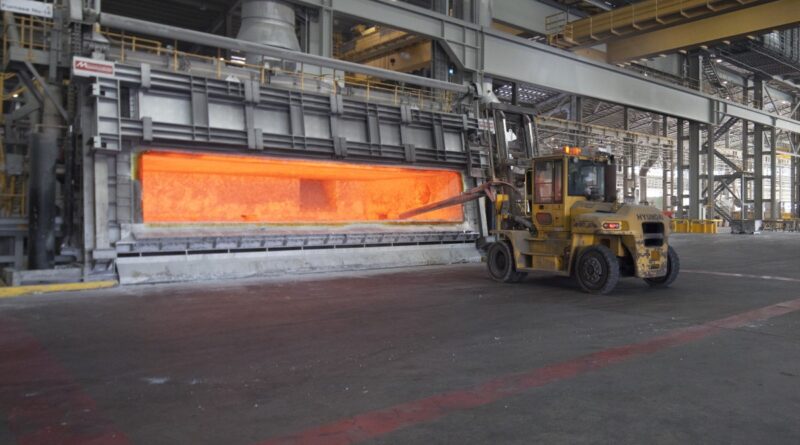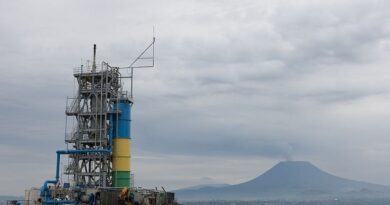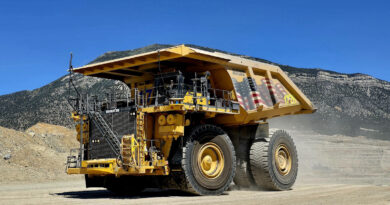Rio Tinto strengthens operational performance across its portfolio
MELBOURNE, Australia – Q2 2022 operational highlights and other key announcements were brifed in Rio Tinto Chief Executive Jakob Stausholm’s statement: “We strengthened our operational performance at a number of sites, which we will now replicate across the portfolio. The delivery of first ore at Gudai-Darri, our first greenfield mine in the Pilbara for over a decade, increases mine capacity and supports production of our flagship Pilbara Blend. We also fired the first draw bell at the Oyu Tolgoi underground project in June, and started producing scandium and tellurium. These critical minerals are being extracted from existing waste streams at our titanium operation in Quebec and copper operation in Utah, without the need for new mining.
“We are committed to transforming our culture and building better relationships. In May, we signed a Heads of Agreement with the Puutu Kunti Kurrama and Pinikura (PKKP) people which will guide the co-management of PKKP country where mining takes place.
“We made progress against our four objectives during the first half and we are determined to further strengthen Rio Tinto while investing to grow in the commodities needed for the energy transition, decarbonise our portfolio, be a partner and employer of choice, maintain our tight capital.”
Q2 2022 operational highlights and other key announcements
- Gudai-Darri delivered first ore from the main plant in June. As it ramps up, we expect increased production volumes and improved product mix in the second half, with Gudai-Darri capacity to be reached in 2023. Pilbara operations produced 78.6 million tonnes (100% basis) in the second quarter, 4% higher than the second quarter of 2021. While significantly higher than average rainfall in May impacted mine production, continued focus on mine pit health and commissioning of Gudai-Darri supported a stronger second quarter. Shipments were 79.9 million tonnes (100% basis), 5% higher than the second quarter of 2021. Full year shipments guidance remains unchanged at 320 to 335 million tonnes.
- Bauxite production of 14.1 million tonnes was 3% higher than the second quarter of 2021 due to strong operational performance at Weipa as a result of improved plant reliability at Amrun.
- Aluminium production of 0.7 million tonnes was 10% lower than the second quarter of 2021 due to reduced capacity at our Kitimat smelter in British Columbia following the strike which commenced in July 2021. A controlled restart began at the end of the second quarter of 2022 with ramp-up progressing subject to labour availability. Production at Boyne smelter in Queensland was impacted due to process instability following COVID-19 related unplanned absences. Production has been stabilised and the cells that have been taken offline are being ramped up over the next 12 months. All of our other smelters continued to have stable performance. Guidance has been lowered to 3.0 to 3.1 million tonnes (previously 3.1 to 3.2 million tonnes).
- Mined copper production of 126 thousand tonnes was 9% higher than the second quarter of 2021 due to higher material movement and higher grades and recoveries at Kennecott and Escondida, partly offset by lower grades and recoveries at Oyu Tolgoi as a result of planned mine sequencing.
- On 18 May, we announced we had agreed to amend the funding plan with Turquoise Hill Resources (TRQ) in order to provide liquidity of up to $400 million in short-term early advances, while the Special Committee of TRQ evaluates our C$34 per share all-cash proposal to acquire the approximately 49% of the issued and outstanding shares of TRQ that Rio Tinto does not currently own. The deadline in the funding plan for TRQ to conduct an initial equity offering of at least $650 million has also been extended from the end of August to the end of 2022.
- Titanium dioxide slag production of 293 thousand tonnes was 2% lower than the second quarter of 2021 with steady performance at Richards Bay Minerals in South Africa and improved stability of operations at Rio Tinto Fer et Titane, Canada. There were some operational disruptions at QIT Madagascar Minerals following cyclones in Madagascar.
- Iron Ore Company of Canada (IOC) achieved milestones in May including record safety performance year to date (0.26 AIFR versus 0.73 in 2021) and monthly records for concentrate production and total material moved. Production of pellets and concentrate was 4% lower than the second quarter of 2021 due to the planned annual maintenance shutdown (seven days) which was successfully completed in June (this work was completed in September in 2021).
- In the second quarter, we continued to successfully roll out the Rio Tinto Safe Production System (RTSPS) and now have 15 deployments across the business at 11 sites, with 30 rapid improvement projects (Kaizens) either completed or in progress. In the half, there has been a 9% year on year improvement in average operating time across processing plants and drills at deployment sites versus the same period of 2021. We are on track to meet our 2022 target of 30 deployments at 15 sites.
- In the second quarter, we entered into additional partnerships and progressed initiatives to decarbonise our business and our value chains. These include a Memorandum of Understanding with Salzgitter to work together towards carbon-free steelmaking, and a strategic equity investment in Nano One – a clean technology innovator in battery materials.
- As the result of Queensland Alumina Limited’s (QAL) activation of a step-in process following sanction measures by the Australian Government, Rio Tinto has taken on 100% of capacity for as long as the step-in continues. This results in use of Rusal’s 20% share of capacity by Rio Tinto under the tolling arrangement with QAL. This additional output is excluded from the production tables in this report as QAL remains 80% owned by Rio Tinto and 20% owned by Rusal.
- Higher rates of inflation have increased our closure liabilities with an impact to underlying earnings. In the first half of 2022, this resulted in increased charges of approximately $400 million pre-tax within underlying earnings compared with the first half of 2021, including a $300 million increase in amortisation of discount, with the remainder impacting EBITDA.
All figures in this report are unaudited. All currency figures in this report are US dollars, and comments refer to Rio Tinto’s share of production, unless otherwise statedallocation and continue to pay attractive dividends.”




